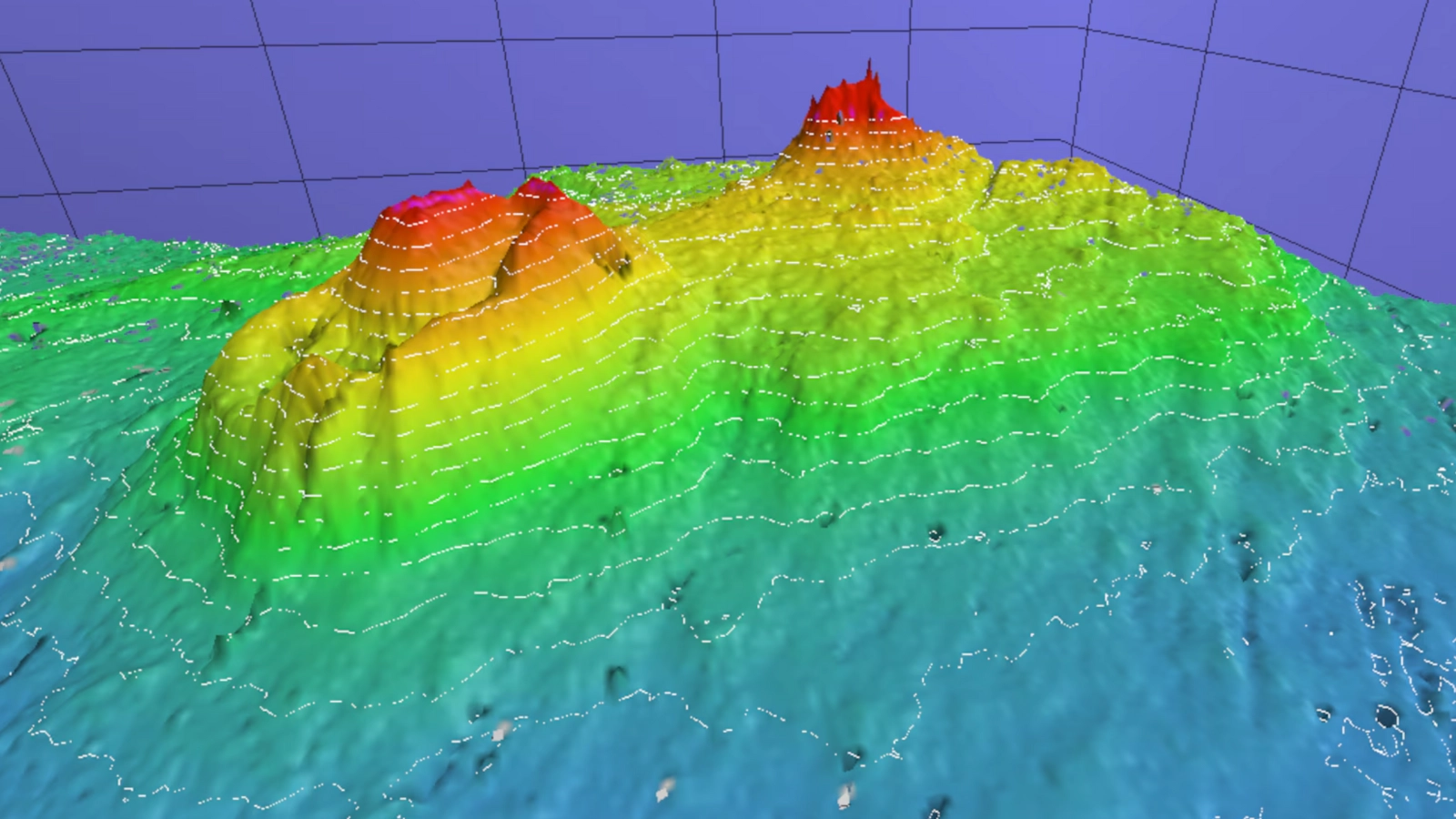Adding to the region’s unsolved mysteries, a state-of-the-art mission in the Arctic uncovers a potential volcano located deep beneath the ocean.#Science #Alaska #NomeAK #News
NOME, AK Picture yourself kilometers out in the Arctic, encircled by icy waters, and surrounded only by snow and ice. Imagine now that a volcano that rises almost 1,640 feet from the ocean floor is hiding beneath the surface. During a historic mapping expedition, U.S. Coast Guard scientists discovered just that, adding even another level of mystery to the Arctic’s unexplored waters.
A Collaborative Science Mission in the Arctic
During its 2024 Arctic Fall mission, the U.S. Coast Guard Cutter Healy made the finding. The main objective of the expedition is to map the waters around Alaska’s northern and western shores, an area that has never been thoroughly studied before. The University of New Hampshire, the National Oceanic and Atmospheric Administration (NOAA), the National Science Foundation (NSF), and the U.S. Coast Guard collaborated on the mission.
The Healy team carried out comprehensive mapping of the Alaskan Arctic Coast Port Access Route Study (AACPARS) and deployed oceanographic buoys in the Chukchi and Beaufort Seas during the first two phases of the operation. The proposed vessel route from Utqiavik, Alaska, to the U.S.-Canada border is the main subject of this study.
Discovery of a Subsea Volcano-Like Feature
The crew discovered a stunning structure during mapping: a volcano-like phenomenon that rises 500 meters from the seabed and is at its shallowest point 1,600 meters (about a mile) below the surface. This discovery is noteworthy because it sheds light on the unidentified geological structures that are hidden beneath the Arctic Ocean’s frozen surface. Water column data showed a possible gas plume rising from somewhat above the feature toward the water’s surface, which increased the excitement.
Even though the team is still analyzing the data, the results are already being praised as a significant advancement in our knowledge of the mainly uncharted area. Although data processing is still underway, these findings are fascinating and provide insight into what may exist underneath the ocean’s surface, most of which is unknown in this region, said Capt. Meghan McGovern, commanding officer of NOAA Ship Fairweather.
Ensuring Safe Navigation and Training the Next Generation
In the Arctic, where there is a dearth of trustworthy depth and underwater feature data, the discovery is part of a broader initiative to increase navigation safety. The mission, according to McGovern, lays the groundwork for safe passage in the area and closes important gaps for canal users. “The partnerships and coordination during this mission provide a foundation for safe navigation in the Arctic and fill critical gaps in the region for all waterway users,” she added.
The mission provides early-career scientists with training opportunities in addition to the ground-breaking scientific research. The crew of Healy’s, comprising both novices and seasoned professionals, is collaborating to offer practical experience in Arctic operations. It’s a privilege to assist such varied scientific missions in the northern high latitudes while striving to improve navigation safety in an area with few soundings, said Capt. Michele Schallip, commanding officer of the Healy.
Looking Ahead to Further Exploration
The possibility of making fresh discoveries in the Arctic Ocean is increasing as the data from this trip is still being examined. In order to learn more about the geology and biology of this isolated area, scientists are keen to explore more of the seabed. The results also serve as a reminder of the significance of ongoing study and cooperation in a mostly unexplored region of the planet.
There is still a great deal to learn about our planet, particularly in its most remote regions, as demonstrated by this expedition and its findings. The Healy and its crew are at the vanguard of the growing scientific interest in the Arctic, prepared to take on the challenges of operating in one of the planet’s most hostile regions.
Associated Subjects: Science|Alaska
We appreciate your input!Was this article thought-provoking, inspirational, or educational to you? Join the conversation by leaving a comment below. We value your feedback and eagerly await your response!
Note: Every piece of content is rigorously reviewed by our team of experienced writers and editors to ensure its accuracy. Our writers use credible sources and adhere to strict fact-checking protocols to verify all claims and data before publication. If an error is identified, we promptly correct it and strive for transparency in all updates, feel free to reach out to us via email. We appreciate your trust and support!




